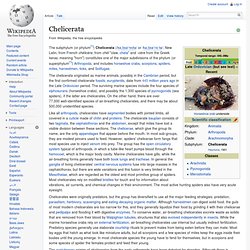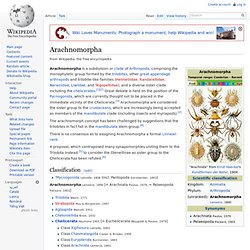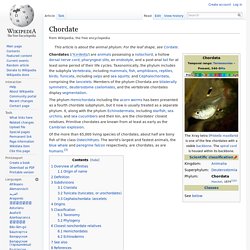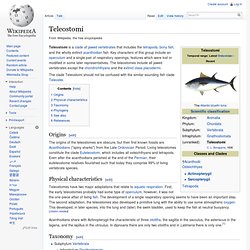

Chelicerata. The chelicerata originated as marine animals, possibly in the Cambrian period, but the first confirmed chelicerate fossils, eurypterids, date from 445 million years ago in the Late Ordovician period.

The surviving marine species include the four species of xiphosurans (horseshoe crabs), and possibly the 1,300 species of pycnogonids (sea spiders), if the latter are chelicerates. On the other hand, there are over 77,000 well-identified species of air-breathing chelicerates, and there may be about 500,000 unidentified species. Chelicerates were originally predators, but the group has diversified to use all the major feeding strategies: predation, parasitism, herbivory, scavenging and eating decaying organic matter. Although harvestmen can digest solid food, the guts of most modern chelicerates are too narrow for this, and they generally liquidize their food by grinding it with their chelicerae and pedipalps and flooding it with digestive enzymes. Description[edit] Chelicerata x Ci Mnd Mx L = Leg. Arthropod. Their vision relies on various combinations of compound eyes and pigment-pit ocelli: in most species the ocelli can only detect the direction from which light is coming, and the compound eyes are the main source of information, but the main eyes of spiders are ocelli that can form images and, in a few cases, can swivel to track prey.

Arthropods also have a wide range of chemical and mechanical sensors, mostly based on modifications of the many setae (bristles) that project through their cuticles. Arthropods' methods of reproduction and development are diverse; all terrestrial species use internal fertilization, but this is often by indirect transfer of the sperm via an appendage or the ground, rather than by direct injection. Aquatic species use either internal or external fertilization. Almost all arthropods lay eggs, but scorpions give birth to live young after the eggs have hatched inside the mother.
Description[edit] Diversity[edit] Segmentation[edit] = Body = Coxa (base) = Gill branch x. Arachnomorpha. Arachnomorpha is a subdivision or clade of Arthropoda, comprising the monophyletic group formed by the trilobites, other great appendage arthropods and trilobite-like families (Helmetiidae, Xandarellidae, Naraoiidae, Liwiidae, and Tegopeltidae), and a diverse sister clade including the chelicerates.[1][2] Great debate is held on the position of the Pycnogonida, which are currently thought not to be placed in the immediate vicinity of the Chelicerata.[3] Arachnomorpha are considered the sister group to the crustaceans, which are increasingly being accepted as members of the mandibulate clade (including insects and myriapods).[2] The arachnomorph concept has been challenged by suggestions that the trilobites in fact fall in the mandibulata stem-group.[4] There is no consensus as to assigning Arachnomorpha a formal Linnean rank.

Classification[edit] ? Pycnogonida Latreille, 1806 (incl. Chordate. This article is about the animal phylum.

For the leaf shape, see Cordate. The phylum Hemichordata including the acorn worms has been presented as a fourth chordate subphylum, but it now is usually treated as a separate phylum. Vertebrate. Vertebrates /ˈvɜrtɨbrəts/ are animals that are members of the subphylum Vertebrata /-ɑː/ (chordates with backbones).

Teleostomi. The clade Teleostomi should not be confused with the similar-sounding fish clade Teleostei.

Osteichthyes. Characteristics[edit] Bony fish have no placoid scales.

Mucus glands coat the body. Most have smooth and overlapping scales of that are ganoid, cycloid or ctenoid. Classification[edit] This has led to an alternative classification, splitting the Osteichthyes into two full classes. Phylogeny[edit] The phylogeny of living bony fishes [11][12][13] Biology[edit] All bony fish possess gills.
Osteichthyes are primitively ectothermic (cold blooded), meaning that their body temperature is dependent on that of the water. Tetrapod. While most species today are terrestrial, little evidence supports the idea that any of the earliest tetrapods could move about on land, as their limbs could not have held their midsections off the ground and the known trackways do not indicate they dragged their bellies around.

Presumably, the tracks were made by animals walking along the bottoms of shallow bodies of water.[2] Amphibians today generally remain semiaquatic, living the first stage of their lives as fish-like tadpoles. Several groups of tetrapods, such as the snakes and cetaceans, have lost some or all of their limbs. In addition, many tetrapods have returned to partially aquatic or fully aquatic lives throughout the history of the group (modern examples of fully aquatic tetrapods include cetaceans and sirenians). A quadruped actually uses four limbs for locomotion; not all tetrapods are quadrupeds. Biodiversity[edit] Tetrapoda includes four classes: amphibians, reptiles, mammals, and birds. Gnathostomata. New fossil finds suggests thelodonts as the closest relatives of the Gnathostomata.[3] It is believed that the jaws evolved from anterior gill support arches that had acquired a new role, being modified to pump water over the gills by opening and closing the mouth more effectively — the buccal pump mechanism.

The mouth could then grow bigger and wider, making it possible to capture larger prey. This close and open mechanism would with time become stronger and tougher, being transformed into real jaws. Newer research suggests that a branch of Placoderms most likely was the ancestors of present day gnathostomes. Late Ordovician-aged microfossils of what have been identified as scales of either acanthodians[7] or "shark-like fishes,"[8] may mark Gnathostomata's first appearance in the fossil record.